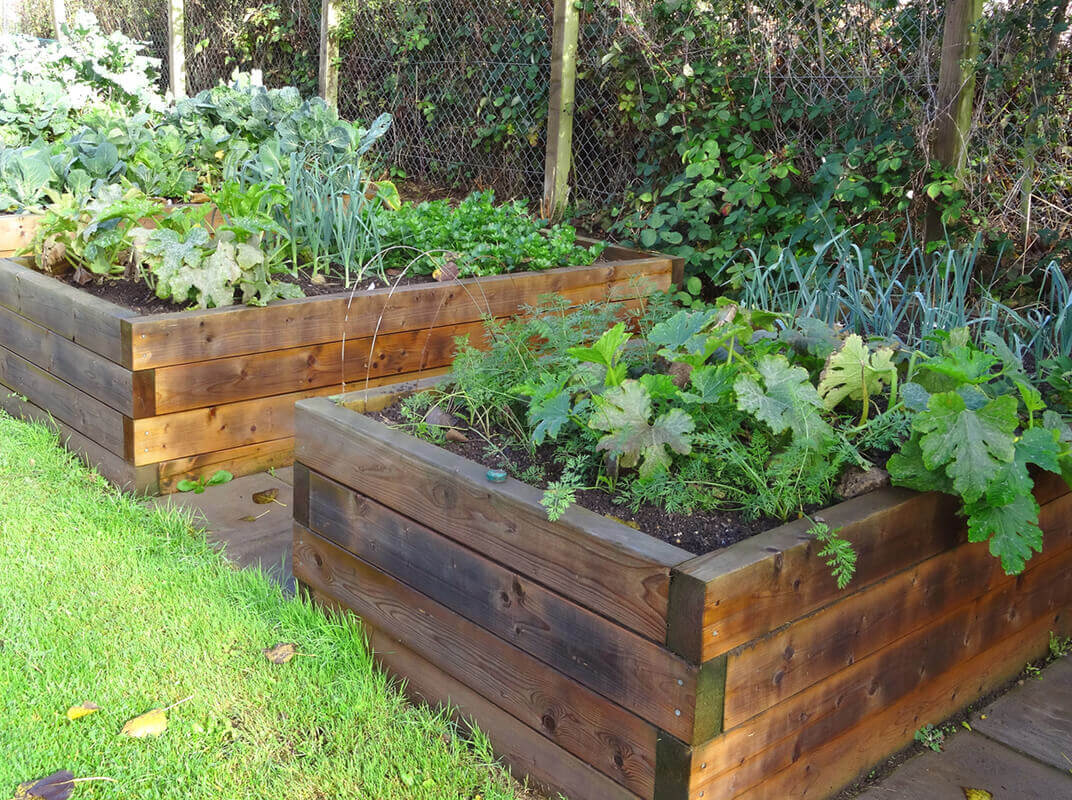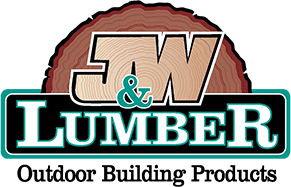
If you’re thinking of adding to or changing the landscape in your yard or garden, you probably already have a vision of how you’d like it to look and what outdoor building materials you will use. There’s no “perfect” way to build landscaping features – the perfect outcome depends largely on personal preference and the project itself.
The first thing to consider (after design of course) is what materials to use. One of the biggest choices homeowners face is whether or not to use railroad ties or landscape timbers for their outdoor projects. Both have advantages and disadvantages, depending on the situation. Let’s take a look at each.
Railroad Ties
The Pros
Railroad ties are, in a word, iconic. They have a uniquely American ruggedness, conjuring up visions of freight trains barreling across the landscape. They’re also great outdoor building materials because of their natural resilience and size.
Railroad ties are sturdy, nearly impervious to rot and insects, and rarely need to be replaced. Railroad ties are made from all different types of wood, including oak and various other hardwoods, to handle the pressure of 100-ton rail cars riding over them daily. Although you may not know exactly what type of wood you are getting in every tie, you can be sure it will hold up under pressure.
If you need something sturdy and long-lasting – like a retaining wall or garden steps – railroad ties may be right for you. They do, however, come with some drawbacks that preclude them from being the right choice for every project.
The Cons
Railroad ties can be very difficult to work with – that’s why you rarely see small cuts of railroad ties used in outdoor projects. You’re best off using railroad ties “as is” – as standard 6-foot and 8-foot timbers. If you’re building something complex, railroad ties might not be for you.
Railroad ties are treated with creosote oil – a strong preservative made from coal and wood tar – that can make them poisonous to vegetables and a poor choice for projects where bare feet or hands might come into contact with them. If you’re building a raised garden box, or plan on having your project anywhere near an edible garden, do not use railroad ties. Chemicals from railroad ties can also leak into children’s play areas, so if you’re building a sandbox or other play area, it’s best to use natural wood instead.
Best Railroad Ties Projects
- Decorative flower boxes (not vegetable gardens)
- Retaining walls
- Area dividers
- Garden Steps
Landscape Timber
The Pros
Versatility is the calling card of landscape timber. It’s sturdy, simple to work with, and easy on the eyes. From Pecky Cedar to California Redwood, there are a variety of landscape timbers to choose from, making it easy for you to match your materials to your vision.
Landscape timbers are a flexible and environmentally friendly alternative to rail road ties. They come in all different sizes and can be cut to your exact specifications. They are a natural product making them easy to work with and giving you the opportunity to make unique cuts for added effect. If you’re building something that requires uncommon angles and shapes landscape timbers are a great choice. Most landscape timbers are not structurally rated, so they are best suited for more decorative projects.
Landscape timbers are naturally rot and insect resistant – which comes in handy for outdoor projects exposed to the elements. They are a great non-toxic alternative to railroad ties, so you don’t have to worry about chemicals seeping into your vegetable garden or your kids’ playground.
The Cons
Not all landscape timbers are created equal. Technically, any type of wood can be used for landscape projects, so choose your wood wisely. Pecky Cedar and Alaskan Yellow Cedar are great for outdoor projects, as they are rot and insect resistant. Woods like Douglas Fir, however, will rot quickly once they are exposed to soil and water.
Redwood and Cedar are unrivaled in beauty and usability, but costs can add up quickly. That’s because Redwood and Cedar are structurally rated and can be used in building everything from patio covers to decking and beyond. While they can be used as landscape timber as well, they are overkill for the cost-conscious. A better choice would be Pecky Cedar and Alaskan Yellow Cedar. You’ll get the same gorgeous look, without the high cost.
While many landscape timbers are resistant to rot, they are not as resistant as pressure-treated lumber or railroad ties. If you are looking for a permanent structure that will last forever, treated wood is your best bet.
Best Landscape Timber Projects
- Vegetable garden boxes
- Sandbox/children’s playground
- Borders
- Trellis
- Benches

Thanks for writing this article. I never thought about using railroad ties to make planter boxes. Is it easier to work with over the typical landscape timber?
Hey there! Thank you so much for taking the time to comment. Railroad ties can be a tricky product to work with depending on the application. In the case of planter boxes, I would say that on average they would be more difficult to use for that specific purpose only because the overall condition of the ties themselves can vary as they are a reclaimed and re-purposed Lumber. They can be quite rough in terms of shape and texture. That said they will last much, much longer, as they are treated to withstand ground and water contact.
Thanks for sharing this article with us retaining wall using railroad and Garden Steps Using landscaping timber is a very nice idea.
I am looking for used railroad ties to use as a backstop for a shooting range at a Not For Profit camp for kids I am invloved with.
Can you help me or direct me to someone who can?
I have a question regarding railroad ties vs. wooden beams. My HOA is telling me that I must remove the “railroad ties” that divide my front yard from my neighbor’s. They claim the “ties” are in disrepair, and the HOA rules claim railroad ties in disrepair must be removed. My wood beams (much longer than ties) are weathered but perfectly straight, not in deteriorated at all – they also keep my landscaping rocks separated from my neighbors. I sent an appeal along with a picture to the HOA, and am hoping that I have a case claiming they are not “railroad ties.”
I like that you said that railroad ties are very difficult to work with. My wife wants me to make some railroad ties in our garden. I’m going to look for a professional instead to help us out.
Wondering if I could send you a couple of photos and get your input
Hi Clara:
We do welcome you to any of our six retail stores where we can show you material options, depending on the type of project you’re interested in.
https://www.jwlumber.com/contact/